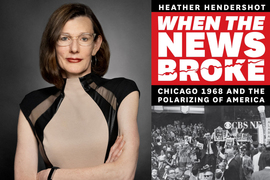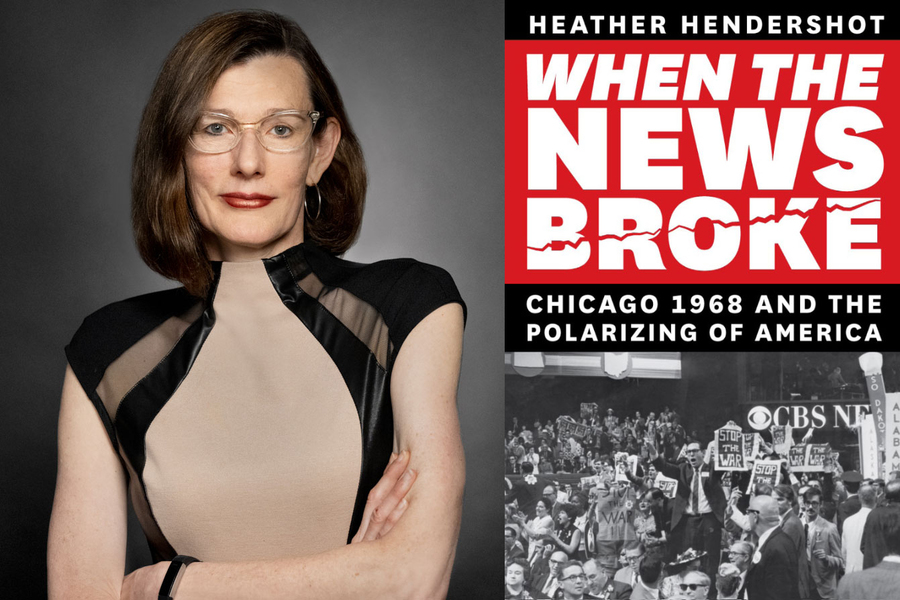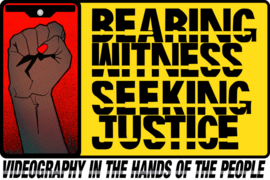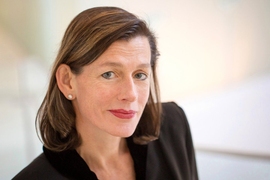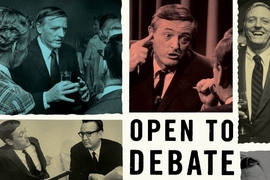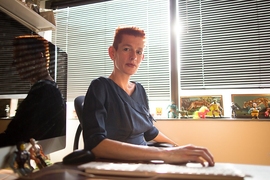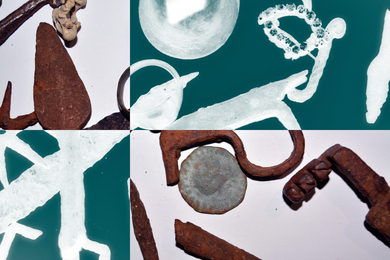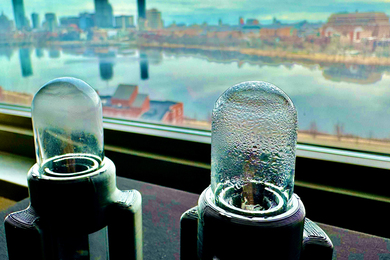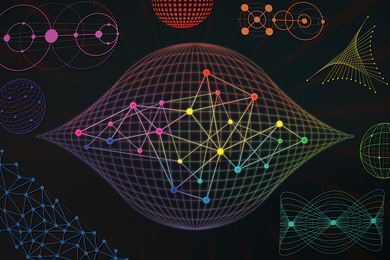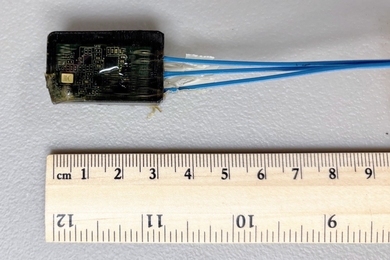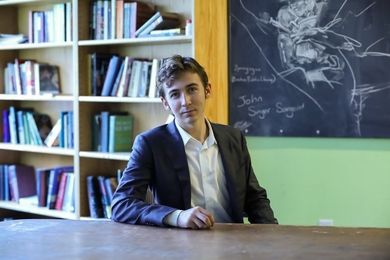“The whole world is watching,” protestors famously chanted outside the 1968 Democratic National Convention in Chicago, as police beat them.
That might not have been literally true, but it was close enough. The convention was the top-rated telecast for all of 1968 in the U.S., with 90 percent of U.S. households tuning in for an average of 9.5 hours. Many viewers had a strong reaction to the chaotic events being broadcast. And a majority of those who wrote letters afterward to the three national television networks — ABC, CBS, and NBC — expressed unhappiness with the things they had just witnessed.
These people were not angry about the use of force against the protestors, however. As MIT Professor Heather Hendershot chronicles in a new book, many Americans were upset with the news coverage because they deemed it too sympathetic to the protestors.
“It just took the Chicago Convention to make us really blast you for your prejudiced and one-sided coverage,” one airline pilot wrote to famed CBS news anchor Walter Cronkite, asking why the network would reward “filthy, screaming minority groups with free TV coverage and at the same time subject millions of true American citizens with such sickening acts?”
Hendershot explores these events in a new book, “When the News Broke: Chicago 1968 and the Polarizing of America,” published by the University of Chicago Press. In it, Hendershot chronicles the turmoil on the streets and inside the convention hall, and shows that the convention was a key inflection point in the relationship between politics and media. Right-wingers had accused mainstream news organizations of unfair coverage during Barry Goldwater’s presidential campaign of 1964, but following the 1968 Chicago convention, such accusations would take root among a wider swath of people and become an ongoing feature of contemporary culture wars and political polarization.
“This is a really important moment, but there have been no deep analyses of it as a media event, and the fallout afterward,” Hendershot says. “It’s a turning point for the idea of ‘liberal media bias’ taking hold as a nationalized sort of discourse. It’s important to be thinking about what’s regarded as a Golden Age of news coverage and how that came to be destabilized after the convention.”
Inside and out
Hendershot’s research has often focused on media and conservative politics in the postwar era. “When the News Broke” grew out of related research Hendershot was conducting, and took flight as a project after she rewatched the entirety of the 1968 Democratic National Convention as it was originally telecast.
As the book makes clear, changes in perceptions of news coverage were related to the very real changes the country was experiencing at the time. The civil rights movement, as well as Richard Nixon’s adoption of the Southern Strategy and a “law and order” theme for his 1968 campaign as the Republican Party nominee, had begun to bring more polarization to the level of party politics.
To be sure, there were plenty of battles unfolding within the Democratic Party, which came into focus at the 1968 convention. Hendershot’s book devotes a chapter to each of the four days of the convention and contains a wealth of detail about events inside the convention hall, where the Democratic coalition was having disputes over its party platform, delegate selection — and the nominee. Hubert Humphrey, President Lyndon Johnson’s vice president, beat out both antiwar candidate Sen. Eugene McCarthy and underdog Sen. George McGovern.
“I also switch the narrative to talk about what was really happening inside the hall,” Hendershot says.
At the same time, 10,000 people had descended on Chicago in 1968 to protest from the left — an amalgam of antiwar protesters, Yippies, and other groups. There were about 12,000 police officers on duty, along with 5,000 members of the national guard and an estimated 1,000 Secret Service and FBI agents. Some protestors did shout foul language and throw objects at the police, including bags of human excrement. The police responded with force, broadcast on the networks. And that did create a clear ideological conflict in which largely lefty protestors were pitted against the law-and-order police forces.
“A lot of Americans felt that just showing this police brutality was showing a bias against the police, and what the networks had done was tell the story wrong, and not show how protestors provoked the brutality, and implicitly or explicitly deserved to be beaten by the police,” Hendershot says.
That was very much Chicago Mayor Richard Daley’s view — and Nixon’s response, too.
“Police can be a little rough,” Nixon told President Johnson in a phone call soon after the convention. “Some of those guys are pretty tough. But on the other hand, nobody was pointing out the provocation” the police faced from protestors, he said.
All of which created a vexing situation for the Democratic Party. The protesters were attacking them from the left, and a Democratic Party mayor supported the physical response, but under the circumstances, it was easy for Republicans to identify with the law-and-order response.
“Daley agreed with the right wing and the mainstream Americans who felt the police had used an appropriate amount of violence in Chicago, or should have used more,” Hendershot says. “Daley said there was media bias [in the convention coverage], conservatives said there was bias. Daley helped the Republicans win [in November]. He didn’t mean to, but he helped Nixon. He kept the story alive.”
Then and now
As Hendershot explains in the book, this emphasis that there was something not just incomplete but biased about the news coverage was fairly new. It was also not necessarily merited, based on the media coverage of fast-moving events under difficult circumstances — including an electricians’ strike that Daley leveraged to limit the media’s ability to use equipment.
“Most people thought, the media makes mistakes sometimes, but you could be a conservative or Republican, or a liberal, and feel they [the media] were very neutral,” Hendershot says. “And after the convention there was an idea that they’re not neutral. That was incorrect. They had done a very good job being neutral. They had made some mistakes, but they actually told the story pretty well.”
Moreover, as Hendershot writes, “Completely ignoring the streets would have been unconscionable, but showing anything in the streets would make the networks vulnerable to attack from those ‘law and order’ Americans who were repulsed and angered by longhairs and antiwar protestors. The ferocity of this inevitable anger caught the networks by surprise.”
Importantly, having found an opening, Nixon spent his years in office cultivating the notion of media bias against him — often through Vice President Spiro Agnew’s public speeches.
“Attacks on the ‘liberal media’ would become one important piece of the culture wars that have raged ever since,” Hendershot writes.
For that matter, Hendershot suggests that such attacks helped Nixon during Watergate, when the news networks seemed less than fully aggressive in pursuing the story, with CBS even paring back its Watergate coverage at one point following White House complaints.
Even so, Hendershot notes, matters have moved to a new extreme today, with claims from many quarters that factual reported news is simply fake, with no attempt to demonstrate such assertions. False claims about the 2020 presidential election, for instance, have flourished despite no evidence supporting them.
“What’s fascinating for me, when you compare it to today, is the idea of news people being told they could have done a better job. There’s still something to the idea that news people can tell a proper story,” Hendershot says. “Today people say what you’re showing never happened, it’s fake news.”
Other scholars have praised Hendershot’s new book. Ann Marie Lipinski of Harvard University has said that “When the News Broke” contains “a deeply researched argument for how four turbulent days planted the seeds of public distrust in media that are still bearing bitter fruit. It is a fascinating look back at a dramatic American summer on which the sun has still not set.”
For her part, Hendershot says she welcomes a wide variety of readers of any background — very much including those who were not present at the time.
“I really wanted to make it a story that would resonate and be meaningful for younger people, and not just older people who already have an idea of what Chicago 1968 was,” she says. Indeed, as Hendershot notes, by quoting James Baldwin at the end of the book: “History is not the past. It is the present. We carry our history with us. We are our history.”
